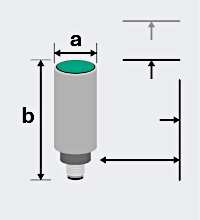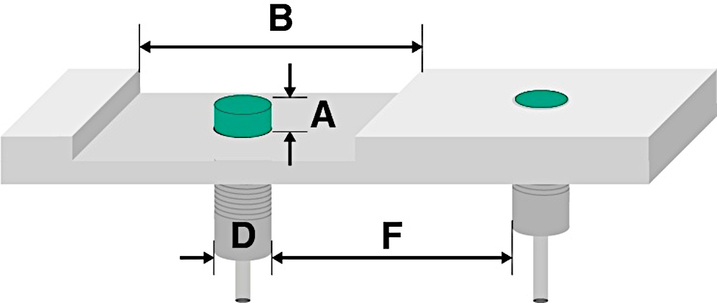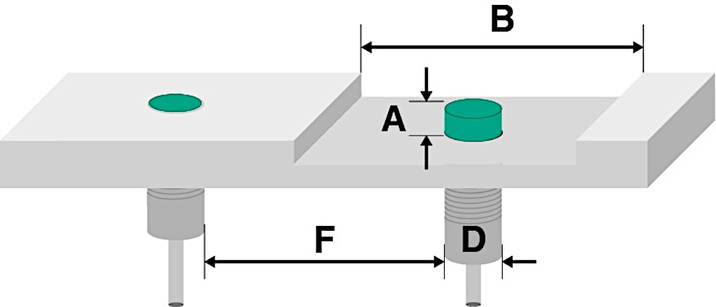Installation Conditions

The installation conditions provide information about optimal installation of the sensors in the application without being restricted in their specified function (i.e., their operating distance). Due to the given installation conditions, a functional range must always be assumed. There is a connection between installation and operating distance.
Cylindrical Capacitive Sensors
Sensors with the same diameter may have different operating distances for installation-related reasons, as shown in the following table.
Diameter [mm] |
Operating distance [mm] with flush mount |
Operating distance [mm] for nonflush mounting |
|---|---|---|
|
12 |
4 |
8 |
|
18 |
5 … 8 |
15 |
|
30 |
10 |
15 |
Nonflush-Mountable Capacitive Sensors
Nonflush-mountable capacitive sensors achieve the largest possible operating distance in relation to their diameter. For capacitive sensors, electrodes are used to generate an electrical field, which forms a capacitor with the environment. To achieve the desired orientation of the electromagnetic field, the sensor electrode has a coordinated geometry. Nevertheless, some of the electrical field is emitted from the side. It is essential to have clearance around the sensor element to prevent such long-range sensors from being dampened by the installation environment. This clearance is defined in the technical data for the respective sensor.

Left: nonflush-mountable capacitive sensor, correctly installed
Right: flush-mounted capacitive sensor, correctly installed
A = 2 x operating distance (sn)
B = 3 x housing diameter (d) of the sensor
D = housing diameter of the sensor
F = minimum distance of similar sensors
Flush-Mountable Capacitive Sensors
Flush-mountable capacitive sensors can be installed in metal such that they do not protrude forward (dimension A = 0 mm). This has the advantage that these sensors are more mechanically protected and less sensitive to interferences than nonflush-mounted sensors. The required reduction of the lateral field is achieved by special internal shielding. This is done at the expense of the detection range: These sensors achieve only about 60% of the operating distance in comparison with nonflush-mounted versions.

Left: flush-mountable capacitive sensor, correctly installed
Right: nonflush-mounted capacitive sensor, correctly installed
A = 2 x operating distance
B = 3 x housing diameter of the sensor
D = housing diameter of the sensor
F = minimum distance of similar sensors
Notes
Capacitive sensors can be flush mounted in conductive material and are relatively insensitive to electrical or electromagnetic influences. When capacitive sensors are installed flush, they only reach 60% of the sensing range of a nonflush-mountable sensor of the same housing design. To compensate for this, correspondingly larger-dimensioned sensors must be selected.
Cross-Talk When the Minimum Distance Is Not Reached
The minimum distances F specified in the technical data must be observed to prevent cross-talk of similar sensors.


Cubic Capacitive Sensors
Similarly, cubic sensors have precise installation conditions for flush, nonflush, or semi-flush mounting. As with cylindrical sensors, minimum distances must be observed between the individual sensors. The rules are specific to the product series and are available as installation information for the selected sensor.









 +49 621 776-0
+49 621 776-0